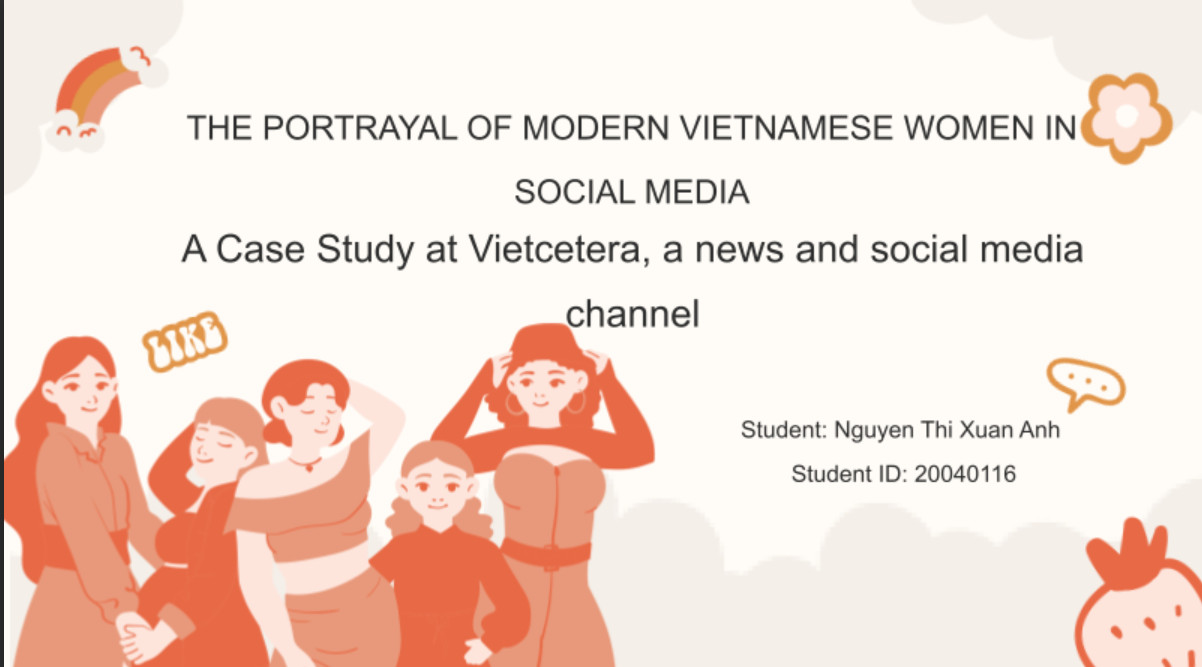I. Literature Review
Traditional media such as television, commercials, TV dramas, and women’s magazines, have continually proved the stereotypical women’s image of heterosexual females, associated with the domestic role as a home-oriented wife and mother (Li, 2021; Van Nguyen, 2021 & Ma & Yan, 2023). Specifically, according to Van Nguyen (2021) who analyzed selected advertisements and interviewed several Vietnamese women who are in different ages and family statuses, in the Viet Nam context, even though parents both take care of the children, men and women have different roles in public and private activities, respectively. In detail, cooking or playing with children is for women, but caring for children in public or social activities seems to be the responsibility of men. Moreover, there is still a stereotype related to love and relationships of women, for example, marriage is a necessary step towards happiness (Roca-Sales et al., 2017) or in the words of Li (2018), marriage and family are the final destinations of women. The image of women, who are intelligent and competent, but once they get married, they are expected to be a wife and mother who stay behind and support their family and husband (Ma & Yan, 2023). One important point is these researchers see it as the sacrifice of women and TV dramas or advertisements discourse are representing a model family rather than reflecting real life. There have also some changes in the image of working women, for example, the values of “status,” “equality,” and “success” have always been emphasized on the covers of the magazine Women of China in the last five decades; however, rather than a realistic portrayal of Chinese women, these covers are more likely symbolic representation created through socio- economic and political-ideological interaction, editorial policy and readers’s taste (Yunjuan et al., 2007).
Therefore, compared to TV dramas, advertisements or magazines, social media and lifestyle blogs have provided a close approach to the portrayal of women, which embody values such as equal rights and opportunities in pay, career, education access and relationships in modern society. Lifestyle blogs show a different representation relating to beauty, physical appearance and freedom of women (Roca-Sales et al., 2017), but there are still stereotypical gender traits displayed both in professional media and social networking sites (Rose et al., 2012). Specifically, Roca-Sales et al. (2017) investigate three popular lifestyle blogs currently in the U.S and claim that the notions of beauty and love have a multifocal approach, for example, there are some articles defending the idea that women are pretty regardless of their size and style, some articles support the idea that having a partner or not being in a relationship are options, but some highlight the importance of having a boyfriend or husband. Besides, in social media space, particular traits emerging in greater prominence in pictures of males included active, dominant, and independent; meanwhile, the prominent images associated with females are attractive and dependent (Rose et al., 2012).
In addition, social media is considered as a tool that both empower and oppress women. For instance, in sport social media, there is increase in the coverage of female athletes and they can freely express themselves via their own social media accounts; however, beside accurate and positive images of women, there is still infantilizing language like labeling or sometimes devaluing female athletes as “girls”, or still reinforcing the gender hierarchy by promoting male athletes as active participants and females as passive ones (Litchfield et al., 2018), or the image of female athletes when receiving media attention are routinely aestheticized and sexualized (Thorpe et al., 2017).
In general, previous studies have shown the portrayal of women in different social contexts like the US, China and VietNam and in different media platforms that grab a large amount of audience but the content itself is influenced by many aspects, which just partly reflect the real world. Besides, the research on social media – the more available platform for everyone, highlights the power of social media that can simultaneously empower and oppress women. These studies in both traditional and social media provide different approaches and perspectives on women, in various aspects such as family, beauty, relationship and freedom, ect.
This study takes an interest in the image of modern Vietnamese women portrayed and aims to describe and analyze this portrayal through language and images used in the popular news and media website, Vietcetera. Through analysis and discussion of collected data, this research aims to find the answer for the questions: how
Vietnamese women are represented in social media, and how language is used to support and represent one’s ideology.


